Journal articles by Jerome K Vanclay
Annals of Forest Science, 2013
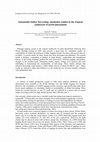
Forest Ecology and Management, 1994
Although logging ceased in the tropical rainforests of north Queensland following their World Her... more Although logging ceased in the tropical rainforests of north Queensland following their World Heritage Listing in 1988, they provide a good basis for simulation studies on sustainability of timber harvesting as reliable logging records, inventory and growth data are available. A growth model for these forests has been developed and published. The growth model is dynamic, responding to changes in stand density, composition and management history. A harvesting simulator predicts the trees removed by selection logging, and predicts changes in the residual stand. Simulation studies employ cutting cycle analysis and yield scheduling to demonstrate the sustainability of harvesting. These studies indicate that selection harvesting could sustain a viable timber harvest of about 60 000 m 3 year -1 . These results are indicative rather than definitive, as the model has not yet been formally validated with independent data.
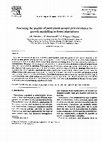
Forest Ecology and Management, 1995
Informed plantation management requires a good database, since the quality of information depends... more Informed plantation management requires a good database, since the quality of information depends on the quality of data, girofih models and other planning tools. There are several important questions concerning permanent plots: how many plots, where to put them, and how to manage them. Plot measurement procedures are also important. This paper illustrates graphical procedures to evaluate existing databases, to identify areas ofweakness, and to plan remedial sampling. Two graphs, one of site index versus age, another with stocking versus tree size, may provide a good summary of the site and stand conditions represented in the database. However, it is important that these variables, especially site index, can be determined reliably. Where there is doubt about the eflicacy of site index estimates, it is prudent to stratify the database according to geography, soil/geology or yield level (total basal area or volume production). Established perrnanent ptot systems may sample a limited range of stand conditions, and clinal designs are an efficient way to supplement such data to provide a better basis for silvicultural inference. Procedures are illustrated with three data sets: teak plantations in Burma, Norway spruce in Denmark, and a clinal spacing experiment in India.
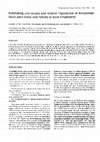
Use-values have been advocated as a tool to compare the value of not just individual species, but... more Use-values have been advocated as a tool to compare the value of not just individual species, but also of plant families and forest types to local people, in order, for example, to identify species or habitats in need of special management or conservation. We estimated use-values in three forest types (upper restinga, lower restinga, tahuampa) on the Amazon flood plain south of Iquitos (Peru), compared two methodologies, identified the most valuable species and contrasted these valuations with the actual use of forest resources in local villages. A new method for estimating use-values was contrasted with the method of Phillips and Gentry (1993a). Despite philosophical and procedural differences, estimates were highly correlated (R2=0.86). We discuss limitations of both methods and suggest some possible enhancements. The need to discriminate between past, present and potential uses is emphasised.
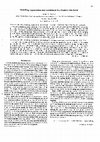
Canadian Journal of Forest Research, 1992
VANCLAY, J.K. 1992. Modelling regeneration and recruitment in a fopical rain forest. Can. J. For.... more VANCLAY, J.K. 1992. Modelling regeneration and recruitment in a fopical rain forest. Can. J. For. Res. 22: 1235Res. 22: -1248 A two-stage model predicts the recruitment (i.e., the number of stems reaching or exceeding l0 cm DBH) of the 100 species that account for 97Vo of all the recruitment observed on 217 permanent sample plots in ihe tropical rain forest of north Queensland. The first stage predicts the probability of the occurrence of any recruitment from stand blsal area and the presence of that species in the existing stand. These probabilities can be implemented stochastically, or deterministically by summing the probabilities and initiating recruitment on unity. The second stage indicates the expected amount of recruitment, given that it is known to occur, and employs stand basal area, the relative number of trees of that species in the stand, and site quality. This approach is easily implemented in growth models and planning systems. VRNCLRY, J.K. 1992. Modelling regeneration and recruitment in a tropical rain forest. Can. J. For. Res. 22 : 1235-1248.
Forest Science, Dec 1, 1991
Abstract: A single growth model can provide both deterministic and stochastic predictions which a... more Abstract: A single growth model can provide both deterministic and stochastic predictions which are compatible. Change may be expressed using probabilistic functions which can represent proportions of populations or probabilities for individuals. The former represents determinism while the latter enables the stochastic implementation. The same functional relationships may thus be used to generate compatible deterministic and stochastic predictions. All components of forest growth and change, including diameter increment, ...
Commonwealth Forestry Review, 1991
Permanent sample plots provide the basis for growth modelling, yield prediction and sustained yie... more Permanent sample plots provide the basis for growth modelling, yield prediction and sustained yield management, and the reliability of the data is crucial to these and many other aspects of forest management. To obtain reliable data, it is necessary to ensure consistent standards and that a wide range of stand and site conditions are sampled using both passive monitoring and experimental plots. Individual trees should be numbered, marked and mapped. Remeasurement frequency should be determined to facilitate plot ...
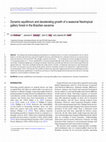
Abstract: Describing and understanding growth patterns in tropical forests is crucial to assessin... more Abstract: Describing and understanding growth patterns in tropical forests is crucial to assessing their role in carbon balance. Growth and vital rates of protected gallery forest in central Brazil were estimated, based on six measurement intervals between 1985 and 2009. The sample consisted of all stems 10 cm diameter at breast height measured in 151 permanent plots (10 × 20 m), distributed in 10 transects perpendicular to the watercourse and 100 m apart from each other. Statistical significance of changes in density, basal area, growth and vital rates were tested using Wilcoxon signed-rank test. Vital rates oscillated during the study period. Growth, recruitment and turnover rates fluctuated, but had a net decrease over the whole study period, whereas mortality seemed to be affected by a high disturbance event during the 1994–1999 period. The oscillatory behaviour of growth suggests that the forest is pulsating around a stable state (dynamic equilibrium). Nonetheless, persistence of decelerating growth trends may force the site's carrying capacity to a lower density or biomass state.
Forestry, 2013
Indicators of forest site productivity may exhibit considerable spatial and temporal variability ... more Indicators of forest site productivity may exhibit considerable spatial and temporal variability that should be considered in sustainable forest management. It is generally assumed that natural site conditions and, in turn, site productivity changes gradually and predictably. Our review illustrates many exceptions to this para- digm. Consequently, uni-dimensional productivity indicators such as the commonly used site index (estimated based on
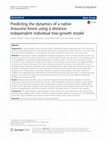
Background: In recent decades, native Araucaria forests in Brazil have become fragmented due to t... more Background: In recent decades, native Araucaria forests in Brazil have become fragmented due to the conversion of forest to agricultural lands and commercial tree plantations. Consequently, the forest dynamics in this forest type have been poorly investigated, as most fragments are poorly structured in terms of tree size and diversity. Methods: We developed a distance-independent individual tree-growth model to simulate the forest dynamics in a native Araucaria forest located predominantly in southern Brazil. The data were derived from 25 contiguous plots (1 ha) established in a protected area left undisturbed for the past 70 years. The plots were measured at 3-year intervals from their establishment in 2002. All trees above a 10-cm diameter at breast height were tagged, identified as to species, and measured. Because this forest type comprises hundreds of tree species, we clustered them into six ecological groups: understory, subcanopy, upper canopy shade-tolerant, upper canopy light-demanding, pioneer, and emergent. The diameter increment, survival, and recruitment sub-models were fitted for each species group, and parameters were implemented in a simulation software to project the forest dynamics. The growth model was validated using independent data collected from another research area of the same forest type. To simulate the forest dynamics, we projected the species group and stand basal areas for 50 years under three different stand-density conditions: low, average, and high. Results: Emergent species tended to grow in basal area, irrespective of the forest density conditions. Conversely, shade-tolerant species tended to decline over the years. Under low-density conditions, the model showed a growth tendency for the stand basal area, while under average-density conditions, forest growth tended to stabilize within 30 years. Under high-density conditions, the model indicated a decline in the stand basal area from the onset of the simulation, suggesting that under these conditions, the forest has already reached its maximum-stock capacity.
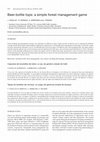
International Forestry Review, 2006
Forest planning and management concepts can sometimes be difficult to grasp. Games provide an eff... more Forest planning and management concepts can sometimes be difficult to grasp. Games provide an effective way to demonstrate different concepts and facilitate deeper understanding of approaches and practices to sustainable forest management. In this paper we describe a game devised to demonstrate alternative ways to set allowable harvest levels in large (>10,000 ha) native forest planning units. The game requires minimal materials (photocopies of relevant maps and a few hundred beer bottle tops), and can be played and debriefed in 2-3 hours. The game focuses on the principles underlying area control and volume control of timber harvesting, and provides a basis for discussion of inventory and monitoring needs. The game has been popular and effective in courses for forestry professionals in developing countries, and for students in an undergraduate forestry course.
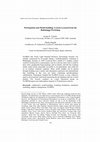
Small-scale Forestry, 2003
FLORES (the Forest Land Oriented Resource Envisioning System) was initially constructed by 50 peo... more FLORES (the Forest Land Oriented Resource Envisioning System) was initially constructed by 50 people during a multidisciplinary workshop in Bukittinggi, Sumatra, in 1999. It proved that a model of a complex system could be constructed in a participatory way by a diverse team; that it could be done with a graphically-based package such as Simile; and that the resulting model could remain reasonably accessible to all participants, and could run on an ordinary notebook computer. Many useful insights can be gained through building such a model, and subsequent experience has demonstrated that modelling in this way can foster continuing interdisciplinary collaboration. Participants founded the FLORES Society, a loose collective open to all researchers interested in pursuing the development and use of such models. The Society conducts an e-mail discussion group on FLORES@cgnet.com (subscription requests to JVanclay@scu.edu.au).
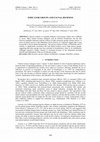
Forest Biometry Modelling and Information Sciences, 2004
Species richness is a popular indicator of ecosystem vitality, but is difficult to assess. Many n... more Species richness is a popular indicator of ecosystem vitality, but is difficult to assess. Many natural resource managers seek an efficient bioindicator, but the link between candidate indicators and the richness of other taxononic groups remains elusive. A series of faunal surveys in the Mbalmayo Forest Reserve in Cameroon suggest that it may be possible to devise faunal bioindicators. The species richness of birds, of butterflies and of termites is significantly correlated with total faunal richness across eight species groups, suggesting that these groups may have potential as bioindicators, alone or in combination. Although expensive, further research is warranted because of the substantial potential benefits and implications of the use of indicator groups. 106 usually posed by resource managers, who often want to make inferences about the total species richness. This question is explored below, using the Mbalmayo data kindly provided by Prof. John Lawton.
Annals of Forest Science, 2009
Empirical observations suggest that in pure even-aged forests, the mean diameter of forest trees ... more Empirical observations suggest that in pure even-aged forests, the mean diameter of forest trees (D, diameter at breast height, 1.3 m above ground) tends to remain a constant proportion of stand height (H, average height of the largest trees in a stand) divided by the logarithm of stand density (N, number of trees per hectare): D = β (H-1.3)/Ln(N). Thinning causes a relatively small and temporary change in the slope β, the magnitude and duration of which depends on the nature of the thinning. This relationship may provide a robust predictor of growth in situations where scarce data and resources preclude more sophisticated modelling approaches.
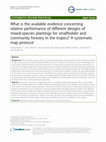
Background: There has been growing interest in mixed species plantation systems because of their ... more Background: There has been growing interest in mixed species plantation systems because of their potential to provide a range of socioeconomic and bio-physical benefits which can be matched to the diverse needs of smallholders and communities. Potential benefits include the production of a range of forest products for home and commercial use; improved soil fertility especially when nitrogen fixing species are included; improved survival rates and greater productivity of species; a reduction in the amount of damage from pests or disease; and improved biodiversity and wildlife habitats. Despite these documented services and growing interest in mixed species plantation systems, the actual planting areas in the tropics are low, and monocultures are still preferred for industrial plantings and many reforestation programs because of perceived higher economic returns and readily available information about the species and their silviculture. In contrast, there are few guidelines for the design and management of mixed-species systems, including the social and ecological factors of successful mixed species plantings.

Forest Ecosystems, 2015
Bioenergy is re-shaping opportunities and imperatives of forest management. This study demonstrat... more Bioenergy is re-shaping opportunities and imperatives of forest management. This study demonstrates, through a case study in Scots pine (Pinus sylvestris L.), how forest bioenergy policies affect stand management strategies. Optimization studies were examined for 15 Scots pine stands of different initial stand densities, site types, and temperature sum regions in Finland. Stand development was modelled using the PipeQual stand simulator coupled with the simulation-optimization tool OptiFor Bioenergy to assess three forest bioenergy policies on energy wood harvest from early thinnings. The optimal solutions maximizing bare land value indicate that conventional forest management regimes remain optimal for sparse stands. Energy harvests occurred only when profitable, led to lower financial returns. A forest bioenergy policy which included compulsory energy wood harvesting was optimal for denser stands. At a higher interest rate (4 %), increasing energy wood price postponed energy wood harvesting. In addition, our results show that early thinning somewhat reduced wood quality for stands in fertile sites. For less fertile sites, the changes were insignificant. A constraint of profitable energy wood harvest is not rational. It is optimal to carry out the first thinning with a flexible forest bioenergy policy depending on stand density.
Scandinavian Journal of Forest Research, 2011
Abstract A review of current literature offers a basis for forecasting some future trends in fore... more Abstract A review of current literature offers a basis for forecasting some future trends in forest harvesting. It is likely that major gains will be achieved through closer integration between informatics and harvesting technology. New sensing technology will allow harvesting machines to better optimise both vehicle movements and handling of harvested material, and to provide a comprehensive inventory of the residual stand and of soil data to assist the management of the residual forest. Such speculation about future harvest ...
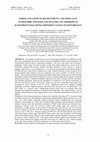
Forest Biometry Modelling and Information Sciences, Nov 1, 2006
The capacity of rainforests to recover from logging disturbance is difficult to model due to the ... more The capacity of rainforests to recover from logging disturbance is difficult to model due to the compounding interactions between long-term disturbance effects, natural dynamics, site characteristics and tree species regeneration strategies. The aim of this study was to develop a quantitative model using over three decades of data from stands subjected to various levels of disturbance ranging from natural, through increasing intensities of tree removal to intensive logging. Data for trees ≥ 10 cm diameter at 1.3 m above the ground (dbh) in subtropical rainforest of north-east New South Wales, Australia were used. Botanical identity of trees at species level, species-specific shade tolerance and size at maturity were used to classify 117 species into five groups. These groups include the emergent and shade tolerant main canopy species, shade tolerant mid canopy species, shade tolerant understorey species, moderate shade tolerant species, and shade intolerant tree species. Multilevel nonlinear regression was used to estimate growth, recruitment and mortality parameters, based on the assumption of variations in tree species performance at both the plot and tree levels. The species group, tree size and competition from larger trees accounted for most variation at the tree level. Significant stand level variables included topography (elevation, slope and aspect), stand basal area, and time since the disturbance. The final model is a classical matrix management-oriented model with an ecological basis and maximum size-dependent parameters of ingrowth and outgrowth. The model provides a tool to simulate stand performance after logging and to assess silvicultural prescriptions before they are applied. Simulations with estimated parameters indicate that moderate harvesting (47% overstorey basal area (BA) removal) in a checkerboard of logged and unlogged patches (group selection) on a 120year cycle could enable sustainable timber production without compromising the ecological integrity in these rainforests. This is due to reduced logging damage in group selection, which also released retained stems and facilitated recruitment of both shade tolerant and intolerant trees. Single-tree selection (35% BA removal) created small canopy gaps that resulted in low recruitment, a slight increase in the growth of retained stems and recovery time of 150 years. Intensive single-tree selection (50% BA removal) resulted in high logging damage that increased recovery time to 180 years. Intensive logging (65-80% BA removal) decreased the stem density and created larger canopy gaps allowing for high growth rates and recruitment of both shade tolerant and intolerant trees. However, few retained stems and high mortality of recruits, increased the recovery time to 180-220 years. Pre-harvest climber cutting coupled with poisoning of nontimber species followed by logging could allow harvesting on a 300-year cycle. Shorter logging cycles may lead to changes in species composition as well as in the forest structure.
Australia's Wentworth Group of Concerned Scientists has been highly effective in advancing policy... more Australia's Wentworth Group of Concerned Scientists has been highly effective in advancing policy solutions for Australia's land, water and biodiversity. The success of this group relies not only on high-profile individuals and clear communication, but also on organizational support and influential connections. The group's influence was maximized because membership was carefully selected, well-funded, and skillfully managed by a full-time campaign manager who was well-connected to key media and political decision-makers. This article offers evidence countering the emerging popular view that the Wentworth Group was spontaneous, and it offers lessons for other environmental NGOs seeking to influence government policy.

Uploads
Journal articles by Jerome K Vanclay